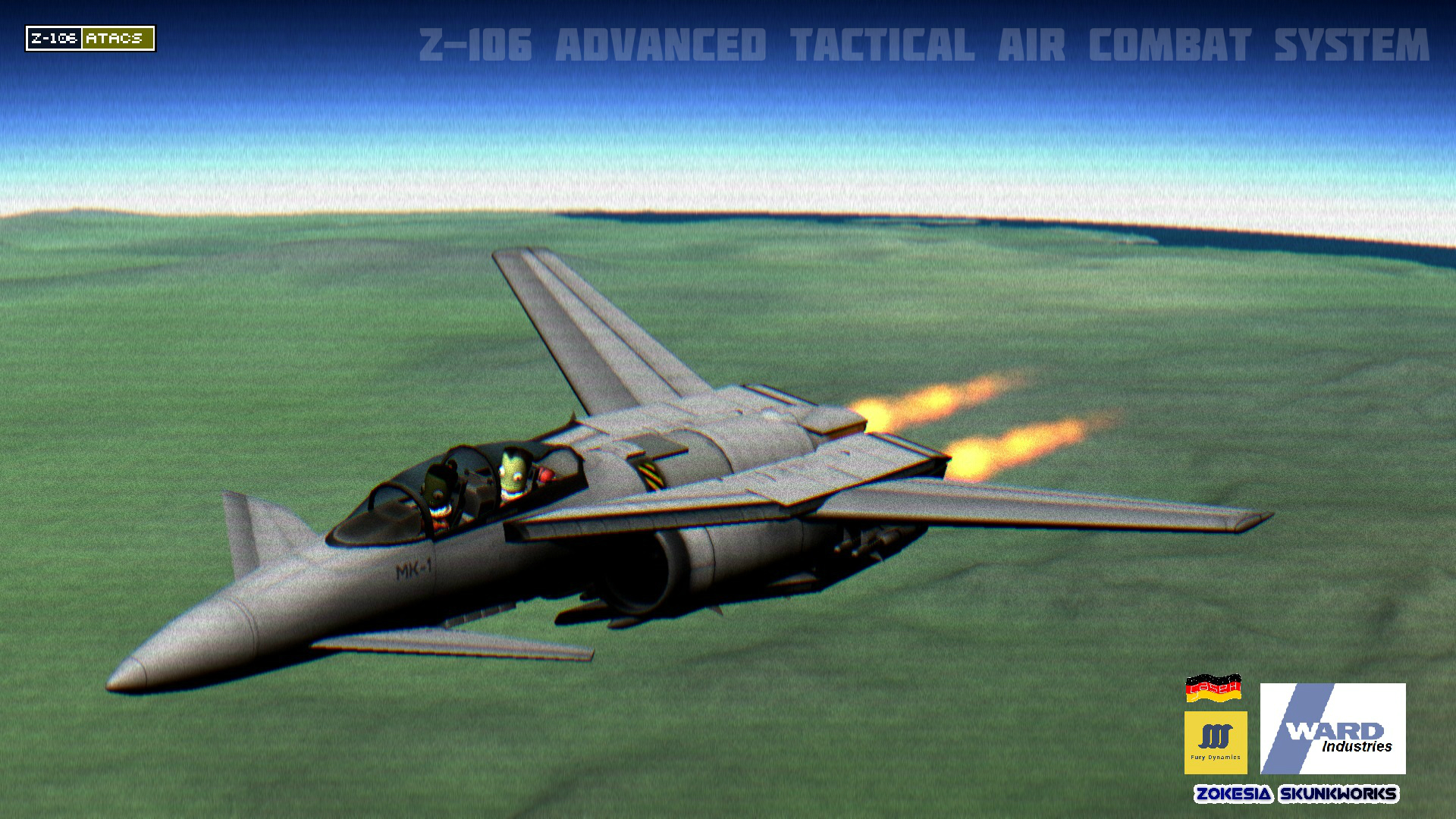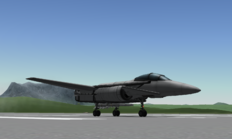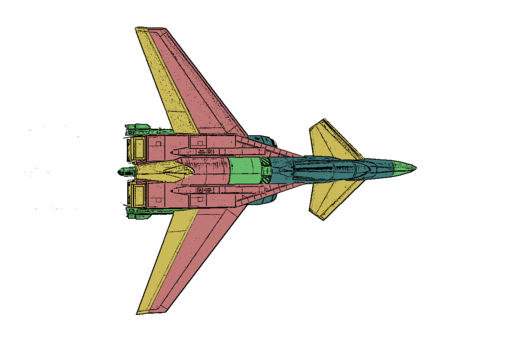Z-106 ATACS
|
Z-106 ATACS
|
|||||
|---|---|---|---|---|---|
 |
|||||
| Role | Air Superiority Fighter | ||||
| National Origin | {{{origin}}} | ||||
| Production History | |||||
| Service History | |||||
| Used By | Zokesia | ||||
The Z-106 Advanced Tactical Air Combat System is a Zokesian 6th generation Air Superiority fighter designed in 2084.
Design
The Z-106 represents a fundamental design shift from the mass-production of Z-80s to a new, more advanced fighter designed to operate in the post-stealth environment. Modern electronics have rendered stealth aircraft highly vulnerable to radar locks, and as a result cross section was no longer the deciding factor in areal supremacy. The need for a large, fast air superiority fighter in the wake of the Second Great Kerbin war was pushed forward in the stalling economy of 2091, with the hopes the country would recover by the time contracting awards were given out.
Two years later, a working prototype was flown for the first time, after a multi-million dollar development project funded by Federal Contract 1395 "ATACS" which outlined a twin-engine air superiority aircraft, lighter than 15,000 kg, capable of a 1400km combat radius unrefueled and superior performance to the current fleet of F-74 Tigersharks.
The first prototype, designated ACF45 (Air Combat Fighter #45), was a radical design change from traditional aerodynamic schools of thought in Zokesia. Featuring a forward canard and large swept rear wings, the ACF45 was at theoretical combat weight 2000kg lighter than the F-74 Tigershark, with comparable armament and considerably faster acceleration. The most obvious feature of the plane was the complete lack of vertical stabilizers, which resulted in lower drag and superior acceleration performances in combat.
Service History
With test pilot Dean Kerm taking the first flight on 2 April 2093, the plane was not only stable but easily controllable, but was reportedly sluggish and nose-heavy in low speed flight. Turn characteristics were poor and it was difficult to attain high speeds at altitude. Going back to the design board, a second prototype, ACF46 took to the sky with Bill Yeeaghraham and Rachel Tallarn at the controls. Significant design changes to the canards and wings resulted in much more agile performance, and extremely high speed at lower altitudes, however at the cost of the need for computer flight assistance due to buffeting instability at speeds over 250 m/s.
The first production vehicle was delivered to the Zokesian Air Force on [REDACTED] and a further [REDACTED] were ordered, arriving late [REDACTED].

